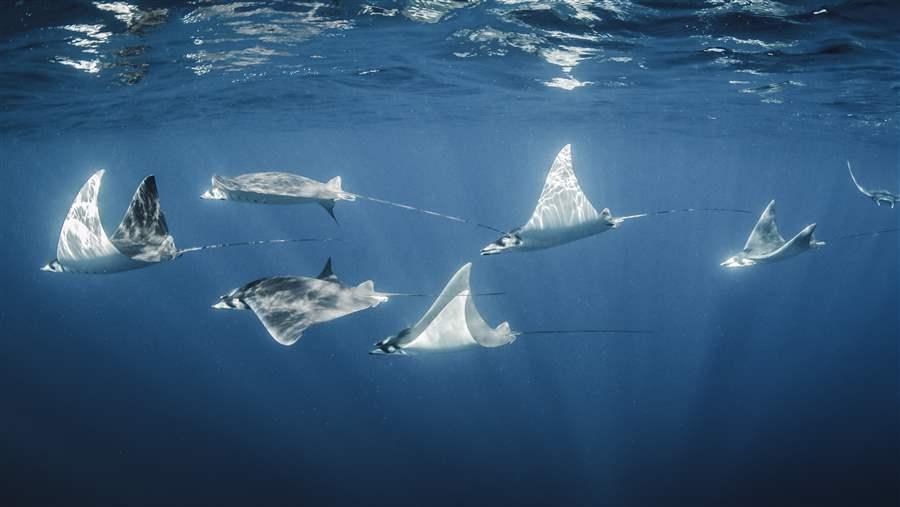Hong Kong Poised to Lead on Shark Conservation as New Protections Take Effect
Enforcement training and fin seizures show government commitment to curbing trade
Sharks and rays worldwide could use another month like April. While populations of both animals still face heavy threats from illegal fishing and overfishing worldwide, many will benefit from the conservation progress of the past month.
On April 4, mobula rays officially gained added protection as their listing on Appendix II of the Convention on International Trade in Endangered Species of Wild Fauna and Flora (CITES) entered into force. That listing, which requires that any international trade in a species be proved sustainable, was adopted at the CITES conference in Johannesburg in 2016.
Then, from April 25 to 27, the Hong Kong government and The Pew Charitable Trusts co-hosted three workshops for more than 120 front-line workers with the Agriculture, Fisheries, and Conservation and the Customs and Excise departments, who are enforcing the CITES listings. Pew also participated in an April 27 workshop at which members of the Hong Kong Legislative Council focused on the dire conservation status of shark populations worldwide and a growing concern within this special administrative region of China that better management and regulation of the trade are needed for these species.
Hong Kong is uniquely positioned to be a world leader on curbing the unsustainable trade in shark fins. A 2015 report by the U.N. Food and Agriculture Organization found that over half of the fins traded globally each year pass through the territory. According to its Census and Statistics Department, approximately 13 million pounds (6 million kilograms) of fins traveled through Hong Kong in 2014 alone.
This is the third round of CITES implementation workshops that Pew has conducted with Hong Kong since 2014, and given that government’s key role in the shark fin trade, it remains an integral part in ensuring successful global implementation of the CITES provisions. Up to 20 percent of the global fin trade is now regulated by CITES, which means that proper training of enforcement personnel is crucial to ensuring that illegal fins do not enter the global market.
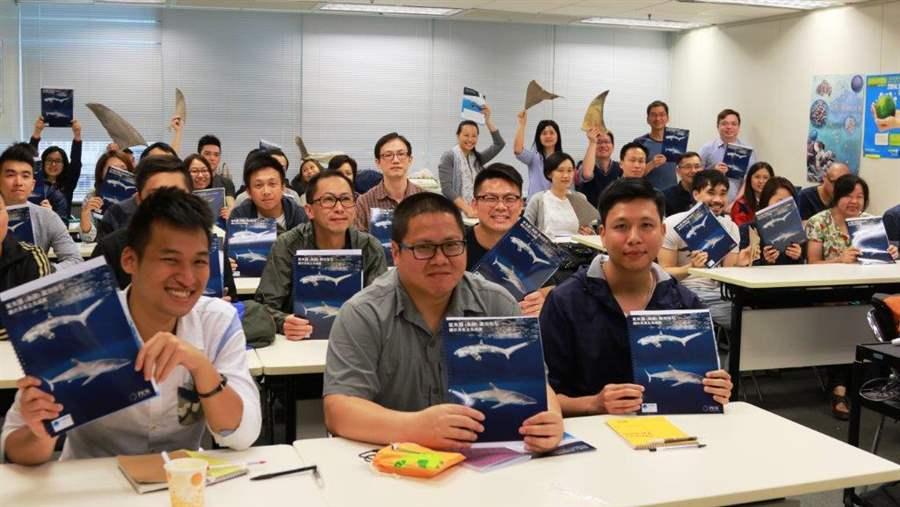
Attendees at an implementation workshop in Hong Kong learn how to identify fins of CITES-listed shark species.
© Kathleen Ho
The skills developed in these workshops have had quite an impact. Over the past three years, Hong Kong has stopped over 3 tonnes of illegally exported shark fins from CITES-listed species, and in the first two months of 2017 enforcement officials there seized more than a tonne of fins from CITES-listed hammerhead and oceanic whitetip sharks, demonstrating the government’s commitment to ensuring CITES compliance.
Shark populations have endured drastic declines worldwide in recent years, mainly due to unsustainable fishing to support the fin trade, which feeds the global demand for shark fin soup. Despite that, no shark species that are regularly commercially traded were afforded international trade protections until 2013.
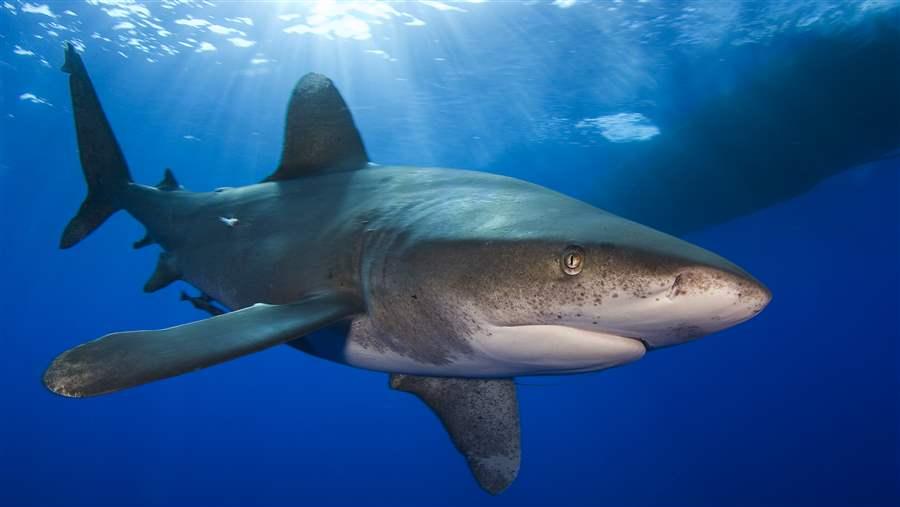
Oceanic whitetips are one of the nine species of shark that are listed on CITES Appendix II.
© Jim Abernethy
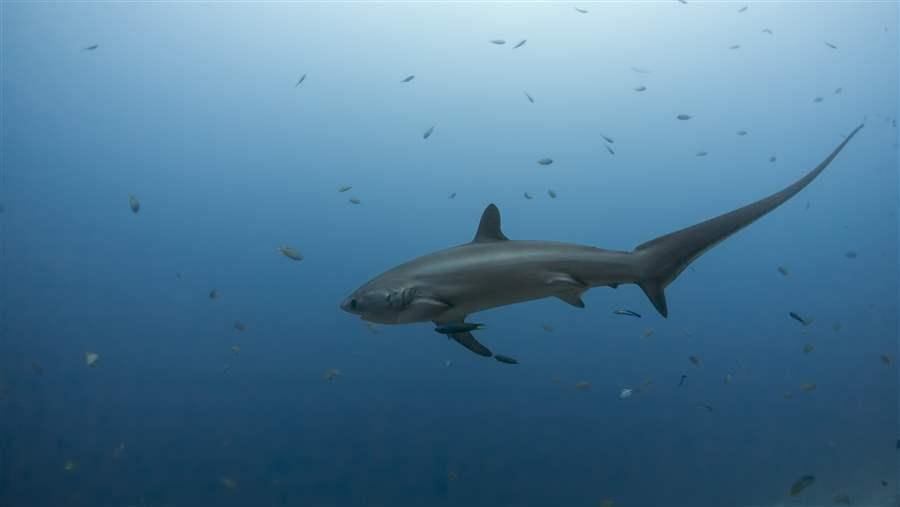
Thresher sharks are known for their whiplike tails. Three thresher species are listed on CITES Appendix II, which requires trade in a species to be sustainable.
© Shutterstock.com
Now, sharks are a cornerstone of CITES’ work, with nine regularly traded shark species listed on Appendix II. Hong Kong enforcement officers learned to identify each of those species at the workshops.
At the April 27 workshop for Legislative Council members, sponsored by their Environmental Affairs Panel and hosted by the Hong Kong Shark Foundation, Pew discussed the increasing number of governments that have enacted effective laws to curb shark population declines. The workshop also highlighted the growing consensus of Hong Kong citizens on having their government do more to protect endangered species. Recent studies show that since 2012, approximately 70 percent of residents have reduced or ceased their consumption of shark fin soup, with a majority of them citing conservation concerns.
Pew looks forward to continuing the discussion on shark conservation and growing our relationship with Hong Kong leaders to cement the territory’s position as a world leader in conservation.
Luke Warwick directs the global shark conservation program for The Pew Charitable Trusts.


America’s Overdose Crisis
Sign up for our five-email course explaining the overdose crisis in America, the state of treatment access, and ways to improve care
Sign up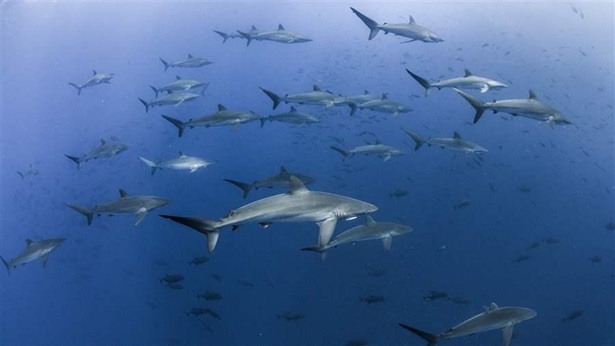
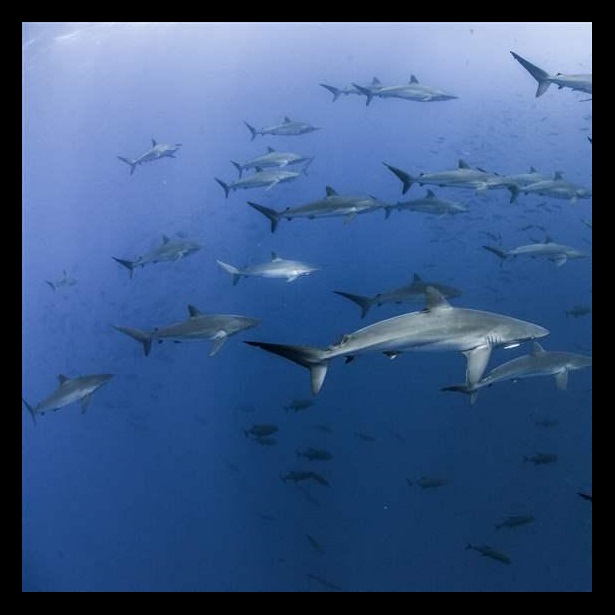
Pew Commends New Shark and Ray Trade Regulations
Silky sharks, thresher sharks, and mobula rays to receive much-needed protections
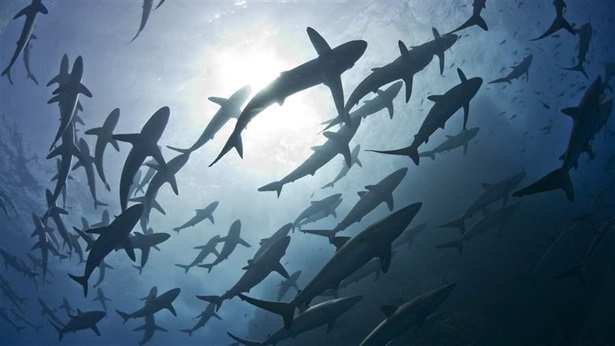
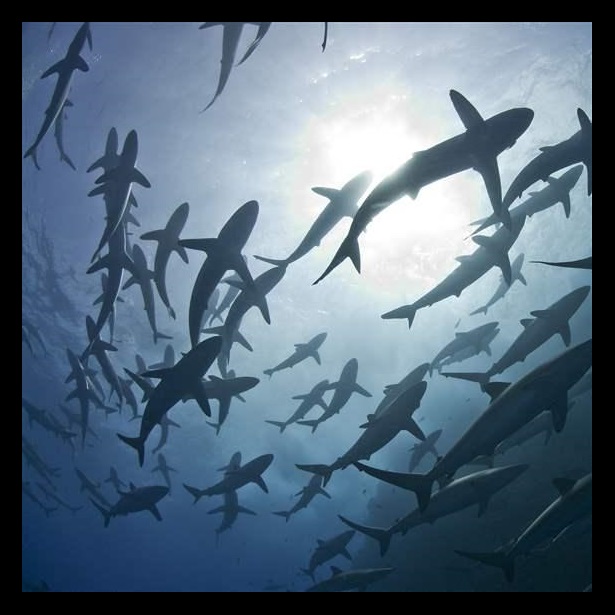
Protecting Sharks, Enforcing CITES
A global effort
